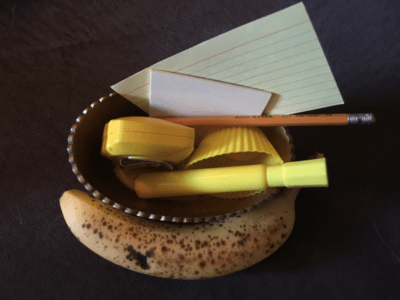
The world you create for your characters is bound to be full of color—it’s everywhere you and your character(s) look. Sight is a powerful sense, so you want to make the most of it. As a writer, the tendency might lean toward using your favorite color, simply naming what your character sees (the green tree), and move on with the rest of the story’s narrative. Hang on! Don’t let the power of color fade away into thin air! Let’s explore the influence that color has in a story (and to make things a bit more challenging for me, I’m not going to use my favorite color—red).
Name That Color!
Suppose one of the characters in your story has yellow hair. You might consider blonde, tawny, or flaxen as alternates. All of them tell the reader the character has yellow hair, but in a more interesting way. Is her hair the color of goldenrod flowers nodding their heads in the late summer sun?
What color is that late, afternoon sun? Yellow, sure, but we can do better than that. How about an amber or honeyed sun? Perhaps it reminds your character of the royal gold in the robes of the king. Is it smoky outside, making the sun the color of Dijon mustard? Think about yellow things: bananas, bumblebees, lemons, and dandelions, and consider using their hue or characteristics in creative, unusual ways.
What Does Color Mean?
Color can help enhance the mood or set the scene for your characters. If it’s a bright, sunny day, they may be happy, energetic, and joyfully eager to get started on whatever lies ahead. By the same token, there are negative emotions, such as betrayal, cowardice, and mental illness associated with the color yellow. Careful thought and choice of the shade, depth, or frequency of using a color will enhance what your characters are feeling, where they’re going, and what they’re doing. It can be incorporated into their surroundings, clothes, or food to help convey a subtle, emotional message.
Symbolism
Depending on where your story is set (or where your character may be traveling), color is an important element to keep in mind. In Japan, yellow is symbolic of nature and sunshine, and is considered a sacred color in the Far East. In China, it represents pleasant and happy feelings and is considered to be the imperial color. Yellow can also be a warning symbol, like the amber light between the green and red on traffic stoplights. Flashing yellow means caution. Does your character have an amber light flashing on and off in their brain? Will they heed or ignore the warning?
Is your story set in Victorian times, and your character received a bouquet of yellow roses? Oh … not a good thing! Back then, yellow roses symbolized jealousy and would be sent to people accusing them of betrayal or infidelity. Fast forward to the present, and they’re now associated with happiness and friendship. Color is a powerful tool—use it wisely for the best effect!
A cautionary note about color:
It’s good to research how other countries use color if your story involves them. Example: The traditional color for mourning in the US and Japan is black. However, in China, white is the traditional color. The color red should not be worn at a Chinese funeral, since it symbolizes happiness and celebration.
Color is silent but speaks volumes. Harness its power to convey thoughts, moods, and details about the setting of your story without having to spell it out for your readers. It will quietly invite your readers to immerse themselves into the world of your story

Niki Kantzios
Useful and welcome hints. I award them a bright, happy bumblebee gold!
Anne
Yay! Glad they were helpful!